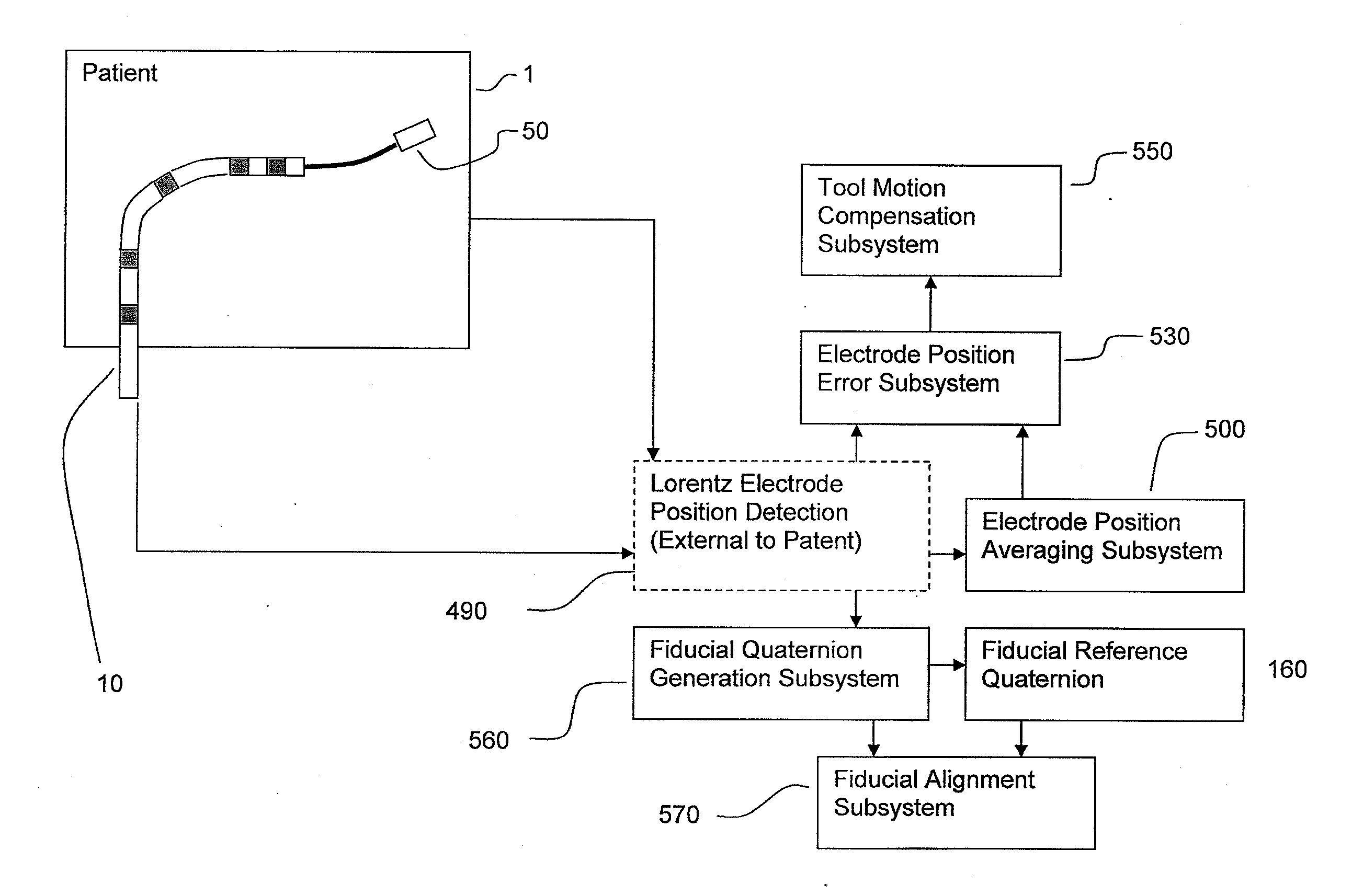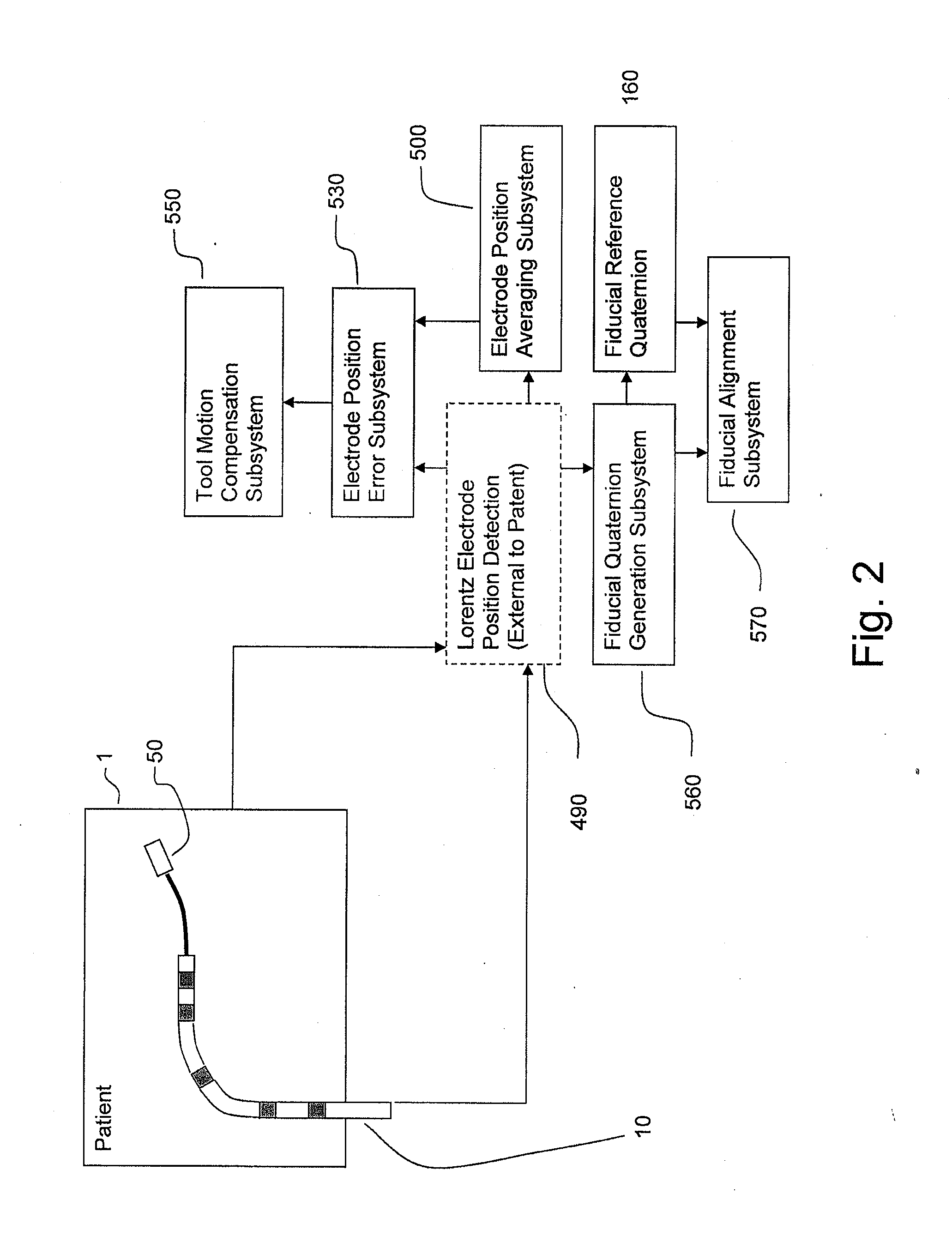Apparatus and method for lorentz-active sheath display and control of surgical tools
a technology of active sheaths and apparatus, applied in the field of lorentz-active sheath display and control of surgical tools, can solve the problems of reliable fix, and inability to provide a consistent fix in the prior art, and achieve the effect of accurate assessment of the true position of the sheath within the patien
- Summary
- Abstract
- Description
- Claims
- Application Information
AI Technical Summary
Benefits of technology
Problems solved by technology
Method used
Image
Examples
Embodiment Construction
[0025]In general, the Lorentz-Active Sheath (LAS) serves as a conduit for other medical devices such as catheters, balloons, biopsy needles, etc. The sheath is inserted through a vein or other body orifice and is guided into the area of the patient where the operation is to be performed. The position and orientation of the LAS is tracked via a conventional position detection system which senses electrical signals that are emitted from several electrodes coupled to the LAS. The signals received from the LAS are used to calculate an accurate and reliable assessment of the actual position of the LAS within the patient. The electrode signals also serve to create a reference frame which is then used to act as a motion compensation filter and fiducial alignment system for the movement of the LAS-hosted medical tool.
[0026]FIG. 1 is an isometric diagram of the LAS assembly 10. Detection system-sensitive electrodes 11-15 are integrated into the LAS shaft 20. The electrodes 11-15 are used to ...
PUM
 Login to View More
Login to View More Abstract
Description
Claims
Application Information
 Login to View More
Login to View More - R&D
- Intellectual Property
- Life Sciences
- Materials
- Tech Scout
- Unparalleled Data Quality
- Higher Quality Content
- 60% Fewer Hallucinations
Browse by: Latest US Patents, China's latest patents, Technical Efficacy Thesaurus, Application Domain, Technology Topic, Popular Technical Reports.
© 2025 PatSnap. All rights reserved.Legal|Privacy policy|Modern Slavery Act Transparency Statement|Sitemap|About US| Contact US: help@patsnap.com



